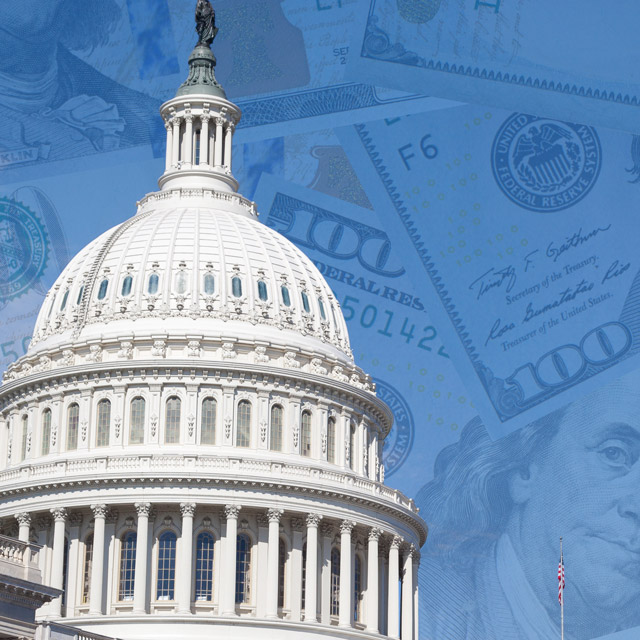Falcon
NOT FOR REPRINT
The Rules for Medigap Before Age 65, in 12 States
By
Allison Bell
Slideshow March 20, 2024 at 10:11 AM
Share & Print
Many insurance agents believe that combining Medicare supplement insurance with traditional Medicare is a great solution for clients who can afford the premiums and want to maximize coverage flexibility. But, for some clients who become eligible for Medicare before age 65, using that strategy may be difficult, very expensive or even impossible. A group of patient and consumer advocates led by Bonnie Burns of California Health Advocates briefed the National Association of Insurance Commissioners' Senior Issues Task Force on the complexity of Medicare supplement insurance eligibility rules during a recent task force session. There is no federal right of access to Medicare supplement insurance until people turn 65, the advocates told regulators, according to a slide deck and a 2023 state enrollment rules chart posted on the task force section of the NAIC website. What it means: Strategies for planning for health care costs for clients who become severely disabled before age 65 could vary widely from state to state and might require more planning for big out-of-pocket costs for retirees ages 65 and older. Medigap: Medicare is a federal program that insures the health of U.S. residents ages 65 and older; people who are severely disabled enough to get Social Security disability insurance benefits and meet other eligibility criteria; and people who have end-stage renal disease, meaning that their kidney disease is so severe that they either are receiving kidney dialysis or have recently received a kidney transplant. About 12%, or 7 million, of the 58 million Americans who had Medicare coverage in 2021 were under age 65, according to a KFF analysis of Centers for Medicare and Medicaid Services survey data. About half of Medicare enrollees use Medicare Advantage plans, which look to the enrollees like an alternative to traditional Medicare coverage, to pay the many deductibles, coinsurance amounts and co-payments built into traditional Medicare coverage. Medicare supplement insurance, also known as Medigap insurance, is another, older product enrollees can use to fill in the gaps. Only about 2% of Medigap users are younger than 65, KFF estimates, based on the 2021 survey data. The economics: Both the managers of the traditional Medicare Part B outpatient hospitalization and physician services program and the companies that write Medigap policies require the insureds to pay premiums. Average 2014 health care spending for a Medicare enrollee under 65 was $13,098, compared with an average of $9,972 for a Medicare enrollee over age 65, according to KFF, and $4,430 for an American under age 65, according to analysts at the Center for Financing, Access and Cost Trends at the federal Agency for Healthcare Research and Quality. The federal government and most states try to encourage Medicare enrollees to pay premiums by putting limits on when they can sign up for coverage without facing medical underwriting, higher premiums or an inability to buy coverage. Eligibility at age 65: Federal law gives people who 65 or older a right to buy Medigap coverage without going through medical underwriting during a six-month period that starts during the first month the enrollees have traditional Medicare Part B outpatient hospitalization and physician services coverage, according to the Centers for Medicare and Medicaid Services. Federal law gives Medicare enrollees who are outside that six-month eligibility window guaranteed-issue Medigap signup rights only in unusual circumstances, such as when a Medicare Advantage plan leaves an enrollee's area or an enrollee moves out of a Medicare Advantage plan's service area. Younger enrollees: People who become eligible for Medicare before age 65 due to disability or severe kidney disease can buy Medigap coverage only if state law creates Medigap enrollment rights for young Medicare users or if health insurers voluntarily choose to offer Medigap coverage to young enrollees. When California Health Advocates compiled a state-by-state list of Medigap enrollment rules for young Medicare users in 2023, it found that one state, New York, required issuers to offer year-round access to all available Medigap policies. Thirteen states and the District of Columbia offer young Medicare enrollees let insurers put all young Medigap applicants through medical underwriting. Thirty-seven states were somewhere in between. Many of those offer young enrollees the ability to buy Medigap coverage with few or no restrictions on the issuers' ability to set the prices. The advocates who briefed the Senior Issues Task Force on state Medigap enrollment rules said one way the NAIC could help would be to gather and update state Medigap enrollment rule data. For a look at the rules in the 12 most populous states, based on the California Health Advocates list, see the gallery above. Credit: Shutterstock
NOT FOR REPRINT
© Touchpoint Markets, All Rights Reserved. Request academic re-use from www.copyright.com. All other uses, submit a request to [email protected]. For more inforrmation visit Asset & Logo Licensing.
Featured Resources
View All
Sponsored by Axos Advisor Services
Integrated Banking Solutions: How To Enhance Client Services and Grow Your Business

Sponsored by Optifino
Three Macro Trends Impacting Long-Term Care: Trends, Solutions & Client Conversations

Sponsored by Vanilla
The Missing Piece: Why Advisors Who Skip Estate Planning are Failing Their Clients







